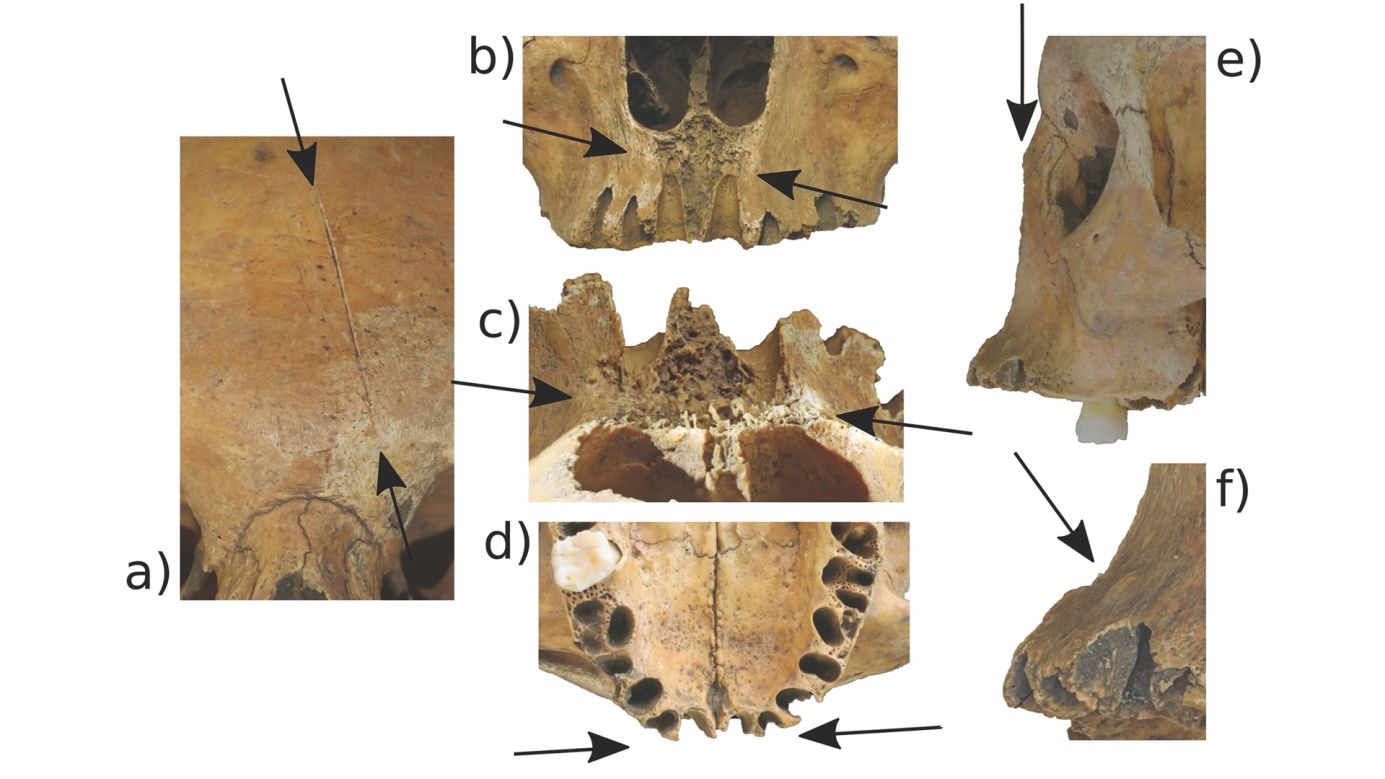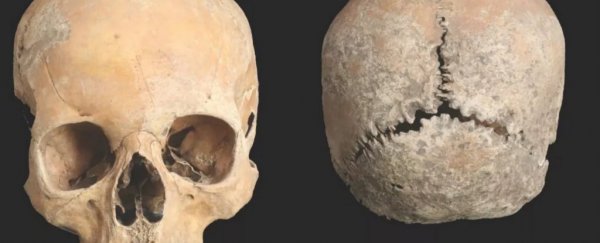About 1,100 years ago in early medieval England, a teenage girl met a horrific end; her nose and lips were cut off with a sharp weapon, and she may have been scalped, according to a new analysis of her skull.
No one knows why the young woman's face was mutilated, but her injuries are consistent with punishments historically given to female offenders.
If this woman's wounds were a punishment, then she is the earliest person on record in Anglo-Saxon England to receive the brutal punishment of facial disfiguration, researchers wrote in a new study, published online yesterday (October 1) in the journal Antiquity.
"We can only speculate as to what happened in this instance, but the highly formalized nature of the woman's injuries suggest penalties for specific actions, such as sexual deviancy, or at least a perception of such," study lead researcher Garrard Cole, an honorary research fellow at the Institute of Archaeology at University College London, told Live Science in an email.
The skull was originally discovered in the 1960s, during excavations prior to the construction of a housing development in the village of Oakridge, in the southern county of Hampshire, England.
However, scientists didn't analyze the skull at the time, and it's unclear whether the skeletal remains of the body were also buried there.
Instead, the skull was put in a collection curated by what is now the Hampshire Cultural Trust. Recently, the skull was rediscovered during an audit of that collection, and "the cranium was still covered with soil, indicating it had not been examined," said Cole, who decided to study it with his colleagues.
A few tests revealed clues about the individual: An anatomical analysis indicated the skull belonged to a 15- to 18-year-old; a DNA analysis showed the individual was female; radiocarbon dating suggested that the teenager lived sometime between CE 776 and 899; and an analysis of different isotopes, or versions, of elements from her teeth suggested that she didn't grow up in an area with chalk hills, meaning she wasn't born or raised in most of central and eastern southern England. (Elements from consumed water and food eventually end up in teeth.)
In essence, she may have been a teenage outsider.
 (G. Cole/Copyright Antiquity Publications Ltd.)
(G. Cole/Copyright Antiquity Publications Ltd.)
Above: A close-up view of the trauma found on the teenager's skull. This includes (a) a cut mark by her nasal opening, (b) cut marks from the front of her nose, (c) from above, (d) by the jaw, (e) by the nose, and (f) a sharp nick on the right side of her skull.
The team also assessed the skull's wounds. The marks around the nose and mouth were severe.
"There were at least two cuts through the bone marking the side of the nasal aperture and the bone between the nose and the upper front teeth," Cole said.
"Both wounds seem to have been made by a sharp, thin-bladed weapon. In the Anglo-Saxon period [CE 410 to 1066], this is most likely to have been an iron knife. The other sharp-bladed weapon — the sword — would be too heavy and massive."
The researchers also noticed a shallow cut across the teenager's forehead, "which we interpreted as evidence for hair removal," Cole said. Usually, scalping leaves multiple cut marks, but it's possible that poor preservation of the skull over hundreds of years obliterated the other cut marks, he said.
The teenager likely didn't survive this traumatic event, as the edges of the wounds show no signs of healing, the researchers wrote in the study.
Even if her lips and scalp had been left alone, "the injury to the individual's nose could have been sufficient to cause her death, as the wound would probably have damaged the network of arteries in the back of her nose," the researchers wrote.
Once cut, these arteries would have gushed blood, and she may have choked to death, they wrote.
The events that led to her demise remain a mystery. Did a mob punish her for a perceived offense? Did local authorities sentence her to a harsh punishment for allegedly committing some type of transgression or deviancy? Without more evidence, archaeologists may never know.
However, "facial mutilation for females, and its parallel castration for males, does seem to be a long-established, worldwide practice," Cole said. And while Anglo-Saxon rulers did later document this punishment into their formal law codes during the 10th century, this case happened before that.
"We now know the practice did happen, but have no idea of how frequently it was applied," Cole said.
This article was originally published by Live Science. Read the original article here.
